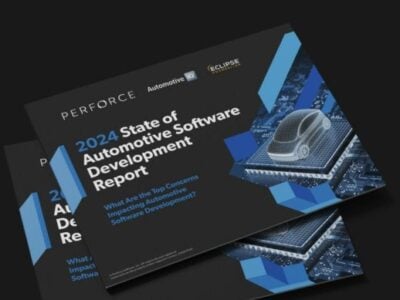
Automotive power semiconductor market continues to soar
In its latest report, the market watcher forecasts the total market for power semiconductors – which includes discretes, power modules and power ICs) – to increase from $5.5bn in 2016 to more than $8.5bn in 2022. Revenue is estimated to grow at an annual rate of 7.5 % from 2015 to 2022.
“Increasing electrification in vehicles generally – and in hybrid and electric vehicles specifically – is energizing the market for power semiconductors in vehicles”, said Richard Eden, senior analyst, power semiconductors for IHS Markit.
Also contributing to the rise of power semiconductors is the move to self-driving, ‘green’ and connected cars. Intermediate safety milestones such as automatic emergency braking (AEB) and platooning are necessary to realize a road system that will accommodate self-driving cars and other factors include the need for more fuel-efficient systems, reflected by increasingly electrifying auxiliary units such, a higher proportion of electric vehicles, and more electronic content per vehicle as required for improved vehicle emission levels.
IHS Markit categorizes five domains on a vehicle: Body and Convenience, Chassis and Safety, Infotainment, Powertrain and Advanced Driver Assistance Systems (ADAS). Of these, Powertrain accounted for 47 % of the total market for automotive power semiconductors in 2015.
Anticipated growth in sales of hybrid and electric vehicles in the next few years will spur power semiconductor sales to climb by CAGR 9.6 % from 2015 to 2022 across all vehicles, taking Powertrain’s market share up to 54 % of the total market, the report says. Discrete IGBT power transistors account for most of Powertrain power semiconductor revenue, but increased integration of discretes into modules will cause IGBT power module sales to increase at a much faster rate.
The Chassis and Safety category represents the second most-valuable automotive domain for power semiconductors, accounting for 24 % of the total market in 2015. In contrast with Powertrain, the use of power semiconductors in Chassis and Safety will only grow with CAGR of 3.1 % from 2015 to 2022. Biggest users of power devices in this domain are applications such as electric power steering, anti-lock braking system and electronic stability control, airbags and tire pressure monitoring, which are already relatively well-established in vehicles.
The domains of Body and Convenience and Infotainment only accounted for 14 % and 11 % of the total automotive power semiconductor market in 2015, respectively. Both categories are expected to grow with a CAGR of around 4 to 5 % from 2015 to 2022, the report predicts. At present, the smallest domain is ADAS, with only 5 % of the total market in 2015. However, ADAS is forecast to see the fastest growth of all of the five domains, growing with a CAGR of 16 % from 2015 to 2022. ADAS will see a rapid increase in the number of sensors, cameras and interconnectivity systems in cars, and all will need power semiconductors in their power control circuitry.
Discrete power semiconductors, the report points out, provide the highest average value per car. This is not surprising as they have the lowest average sales price and are used in even the simplest, cheapest automotive electronic systems.
Power ICs provide slightly less average value per car. They are more expensive and newer, so are more prevalent in high-end vehicles and more modern car designs, which contain more features, like ADAS, for example. For the time being, power modules have the smallest average value per car because their use is restricted to larger, high-end vehicles and to hybrid and electric vehicles only.
The report can be accessed here: “Power Semiconductors in Automotive – 2017
 If you enjoyed this article, you will like the following ones: don't miss them by subscribing to :
eeNews on Google News
If you enjoyed this article, you will like the following ones: don't miss them by subscribing to :
eeNews on Google News




